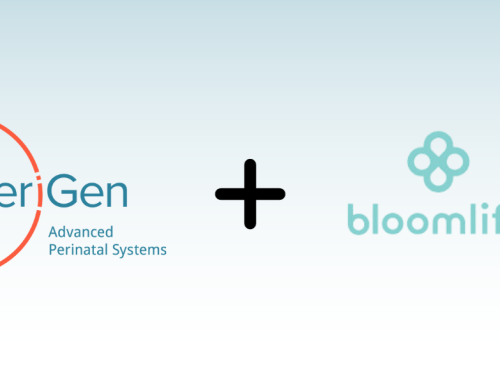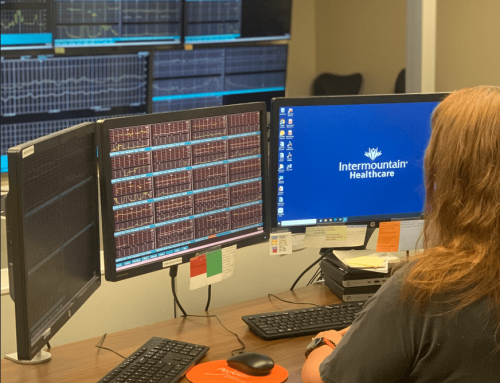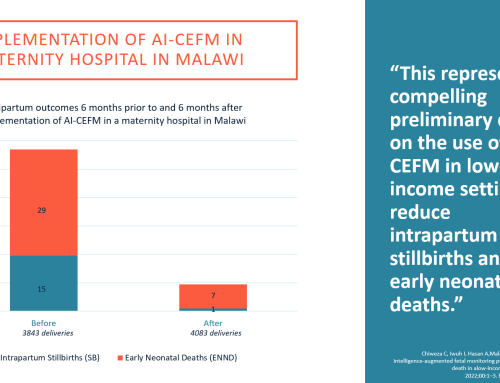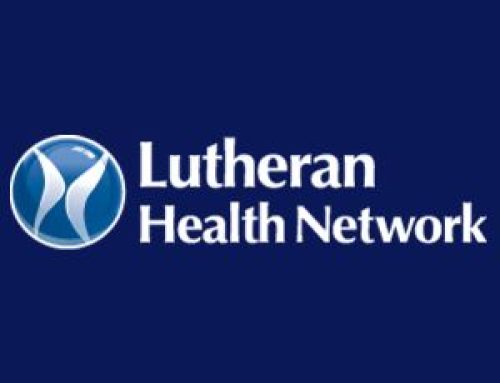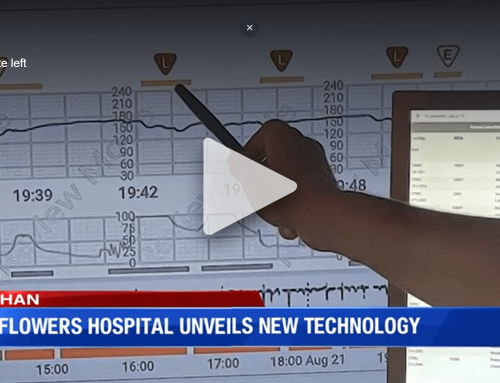PeriGen EMR Integration:
How PeriGen® Modules Integrate with
Popular EMR Systems
by Bruno Bendavid, Senior Vice President, Product Management
Enterprise-wide or site EMR systems are the cornerstone of every hospital in the age of HIPAA, Meaningful Use (across its many iterations), revenue management, and of course patient record and clinical practice management to name a few. That said, one cannot expect these broad systems to adequately answer the pure clinical expectations and specialized medical device requirements of all healthcare disciplines within the hospital. PeriWatch™ Tracings™, an obstetric monitoring, surveillance, and archiving system, is an example of such a system providing clinicians with specialized functionality that an EMR does not provide, along with unique situational awareness capabilities.
The challenge is how to marry such disparate systems in a hospital or enterprise with multi-facilities with dozens of specialty systems and still provide an effective, compliant and clinically safe and meaningful technological platform.
Although the full answer to this question can span many paragraphs, we will focus on the two main categories of services that constitute the pillars of effective integrations between systems:
- The “Conduit” or communication layer — the “how,” and
- The data layer or content — the “what.”
These two main categories can be further detailed as follows:
- Effective, reliable, customizable and generic data exchange services capabilities between system such as HL7 or Web Services — the “Conduit,” and
- Effective content exchange such that the EMR and the specialty system effectively complement each other to provide the best experience and value to the clinician taking care of the patient!
To better translate these concepts to concrete examples, here are some scenarios describing typical use cases based on PeriGen’s customer experiences when implementing the PeriWatch Tracings system in labor and delivery units where the hospital EMR used is Epic (with their OB documentation package — Stork).
Meet Jane, an exemplary labor & delivery nurse
Among her many tasks, Jane needs to monitor the maternal vital signs and fetal tracing patterns at the bedside or nursing station or in another one of her patient’s rooms. In addition, Jane needs to document the essential time-sensitive parameters for the patient and chart all other clinical information in the official medical record. All that on top of the primary focus — to provide top-notch care for the mother and baby.
Jane and the hospital administration want nurses to spend most of their time with patients rather than doing data entry and documentation (as much as possible). Double entry of data is to be avoided and any automation of repetitive tasks and functions that can save Jane time are of great importance to clinicians.
PeriWatch Tracings and Cues™ provide a comprehensive set of features that allows Jane to solve all of these challenges:
- Customizable interface data exchange model between Epic Stork (or other EMRs) and PeriWatch Tracings: Although all hospitals require basic similar functions, the reality, size, and type of hospital dictates the type of workflow required. Easily definable data mapping that fits the typical workflow per hospital yields the best results. As a rule of thumb, 60%-70% of interfaced data fields are common between hospitals. The rest are specific mappings that fit the particular workflow of each site.
- Inbound and outbound data: Like most hospitals, Jane’s wants to establish a repeatable and prescribed workflow. The decision was make to provide two modes of communication — and inbound interface and an outbound interface. Clinicians decide which data items they want to see go from the surveillance system to the EMR and vice versa. Since Epic does not support full bi-directional interfaces, the best way to describe the model between PeriWatch Tracings and Epic is a two-way uni-directional interface. Hospitals can choose how many and which fields to map and in what direct they want them to flow.
- Single source of truth: Data is entered once, on either system. It is then sent to the other for viewing and reference. This makes for a streamlined and effective way to always see the current data without double entry, while maintaining a simple and supportable interface logic and supporting the hospital’s need for the EMR to be the legal medical record.
A more detailed scenario
Maternal vital signs from the fetal monitor are collected in PeriWatch Tracings in real-time and sent to the Epic doc flow sheets where all patient data is stored. This can happen in real-time or be batched for the number of minutes required.
- Tracing annotations are entered by the nurse on the fetal tracing as it is part of those time-sensitive data points that nurses are so used to capturing on the fetal strip. This can include (but not be limited to)
- Free text or pre-defined textual annotations
- Pelvic exams and related fields
- Maternal assessment fields like membrane status and ROM date & time
- Fetal assessment
This data is documented on the tracings and sent as HL7 messages to the Epic flow sheet as read-only fields. If the nurse needs to correct or amend a value, it is always done in the source system. The information is then reflected in the receiving system at the precise time.
- Select fields charted on the Epic flow sheet that are relevant to the tracing are mapped and posted as read-only tracing annotations in PeriWatchTracings. This can include:
- Specific textual annotations from the Epic flow sheet to the tracing (this can be any fields)
- Oxytocin use
- Interventions actions. This is typically a multi-selection field that could be useful to see intervention actions on the tracing timeline.
- Communications to providers, reasons and respective actions
- Others, as required
It is very important to note that the directionality of any of the fields listed above (with the exception of vital signs) is fully customizable and is decided by the clinical team with the guidance of PeriGen interface specialists. It is also important to note that the mapping between the two systems can be changed at any time. It is recommended to regularly review and seek improvements to the workflow to ensure it provides the most effective process and meets the clinician’s needs. PeriWatch Tracings provides very easy and flexible ways to adapt the interfaces to customer needs.
- Once the episode-of-care is completed, an optional module (Cold Feed) provides PDF documents of all main artifacts captured in PeriWatch Tracings for automatic attachment to the patient’s visit EMR record. Documents such as the fetal tracing, annotation list, audit trail documents can then be viewed offline directly as part of the EMR or an associated document management system. This allows clinicians to consult past episodic data without the need to have the specialty application deployed. This provides great flexibility to users especially physicians.
- When dealing with multiple systems, one of the tasks that is considered as “painful” by all clinicians is the need to authenticate to each system independently and sometimes with different user accounts / passwords.
To fulfill the requirement of avoiding redundant steps, PeriWatch Tracings supports bi-directional Single Sign-On (SSO) capability that provides the following functions:
- Central authentication via Active Directory usernames/passwords
- Authentication or logoff on any system automatically the other system on any given shared station. There is no need for an extra click or a launch of any external viewer.
- This capability is supported on both thick or thin deployment scenarios.
- PeriWatch will warn users when the currently open patient record in Epic differs from the one open in PeriWatch Tracings.
- Full support for external token/card based enterprise SSO platforms like Imprivata or Caradigm, to name a few.
The EMR integration capabilities described above provide clinicians an excellent complementary solution between PeriWatch Tracings and Epic (or other EMR’s) that adapts integration capabilities to needs while maintaining flexibility and providing for the evolution of workflow.
Key Stakeholders
Such interfaces and integration options are relatively simple to implement on top of the base PeriWatch system and requires planning and coordination from 3 main stakeholders:
- The Clinical Lead as the main stakeholder for the clinical workflow and data mapping
- The Interface Specialist as the interface technical lead who establishes the “conduit” between PeriWatch Tracings and the interface engine (standard) or Epic directly (rare)
- The IT Lead as the main stakeholder for the system integration, authentication/SSO and cold-feed export
Expanding clinical workflow capabilities
Up to this point, the focus was on capabilities that most systems in the industry provide today in varying degree. HL7 ORU (Results) interfaces have been around for quite some time and vital signs and annotation interchange provide a much more effective way to have two systems coexist. Are there other ways to further expand the model and provide even better capabilities to clinicians?
The answer lies in the “Content”.
There is yet more to offer clinicians in terms of automating the recurrent data entry tasks while focusing on true patient health physiological parameters.
PeriWatch Cues provides a unique situational awareness model that detects and labels all fetal heart rate patterns as well as uterine contractions. This includes baselines, variability, accelerations, decelerations (and their sub types), contractions, and so on, all based on NICHD definitions. Breakthrough technology like PeriWatch Cues provides an objectively reviewed, repeatable and tireless aid to all clinicians to identify potentially risky trends in fetal heart patterns.
Jane (our exemplary OB nurse) has to document all of these parameters every 10-20 minutes by looking and scrolling 10-12 min of tracing at a time and doing so for the 2-3 patients she is responsible for.
PeriWatch Cues provides a comprehensive single view of all fetal heart patterns detections and a long- term trend view of concerning features and the ability to transcribe them in the official record.
The uniqueness of PeriWatch Tracings & Cues is to provide for deeper integration of content between the surveillance system and the EMR by providing the clinician the possibility to approve the output of PeriWatch Cues over a range of time and directly post it to the EMR. This saves many minutes of repetitive transcription for each patient, reducing nurse workload and allowing for more time to directly attend to the patient.
Up Next: What to expect from PeriWatch in the future
 PeriGen customers should expect the introduction of situational awareness content interfacing capabilities as part of the company’s upcoming product release cycles.
PeriGen customers should expect the introduction of situational awareness content interfacing capabilities as part of the company’s upcoming product release cycles.
To conclude, PeriWatch Tracings provides a robust data exchange infrastructure, customizable HL7 ORU data interchange capabilities for both inbound and outbound needs as well as single sign on capabilities with Epic/Stork. Current development focuses on expanding the use of its patented situational awareness models to complement the EMR with user confirmed detected patterns and/or calculated conditions not available with any other platform in the industry. Such capabilities focuses on providing just-in-time clinical interpretation for OB clinicians while providing a simple, streamlined and time saving experience.


